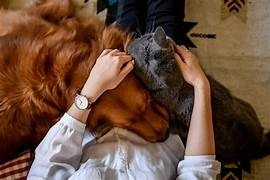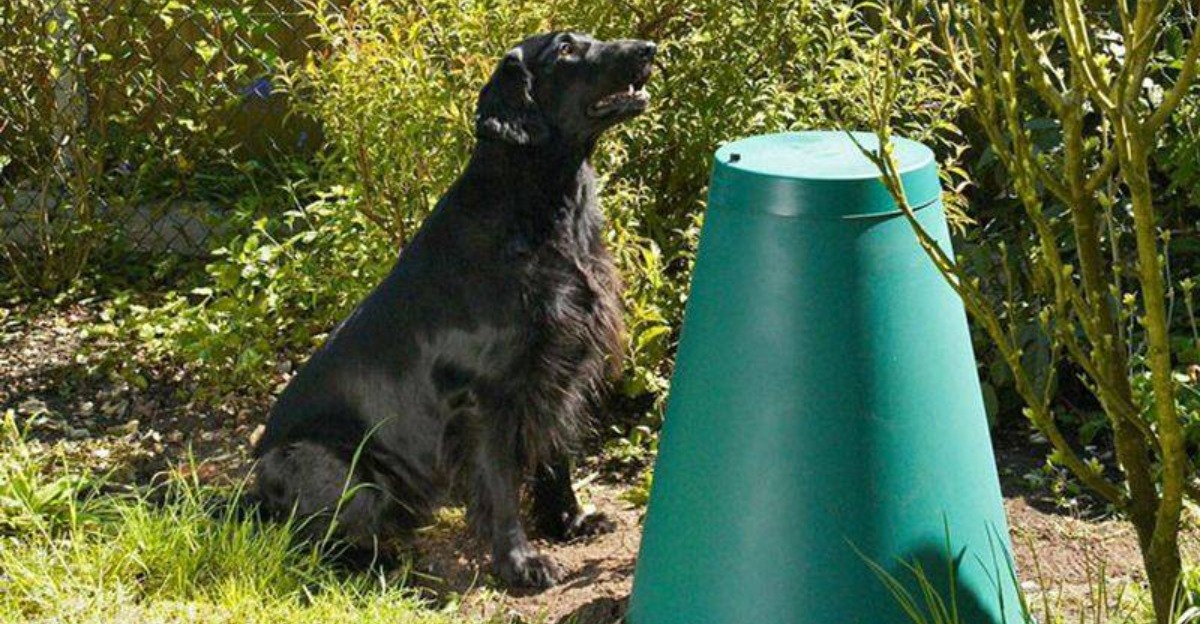
Seasonal Care for Labradors: Summer and Winter Tips
Labradors need special care in summer and winter due to their sensitivity to temperature extremes. Summer care involves hydration, shade, and early walks, while winter requires warmth, proper clothing, and calorie adjustments. Monitoring for signs of heatstroke or cold stress is essential. By adjusting their routine, diet, and activity according to the season, you can ensure your Labrador stays healthy, happy, and safe year-round.
🐶 Pet Star
42 min read · 10, Jun 2025

Introduction
Labrador Retrievers are one of the most popular dog breeds in the world—loving, energetic, and loyal companions. Their adaptable nature makes them great pets, but like all breeds, they require special attention as the seasons change. Whether it’s the scorching heat of summer or the chilling cold of winter, seasonal shifts can significantly impact a Labrador’s health, comfort, and activity levels.
Unlike some breeds, Labradors are double-coated, which means they have a dense undercoat beneath their outer fur. While this provides them with insulation, it also requires specific care to avoid problems like overheating or dry skin. Understanding the needs of your Labrador in both hot and cold weather is key to keeping them healthy and happy year-round.
In this article, we’ll break down the best seasonal care tips for Labradors during summer and winter. From grooming and hydration to exercise and diet, we’ll cover everything you need to know to support your furry friend through every season. Caring for a Labrador Retriever, a breed renowned for its boundless energy, love for the outdoors, and adaptability, requires a nuanced approach that extends beyond basic daily needs, particularly when considering the dramatic shifts between summer heat and winter cold. Their dense double coat, while offering insulation, also presents unique challenges across seasons, making a tailored seasonal care guide not just beneficial but essential for their continued health, comfort, and well-being. Understanding and proactively addressing the specific demands of summer and winter ensures that your Labrador remains vibrant, resilient, and protected from the environmental stressors that each season brings. This involves adapting their exercise routines, adjusting their diet, providing appropriate shelter, and implementing specific grooming and health checks to mitigate risks and capitalize on seasonal opportunities for enjoyment.
Summer in many regions presents the most significant physiological challenges for Labradors, primarily due to their susceptibility to overheating. Their thick double coat, while protective in cooler weather, can act as an insulating layer that traps heat, making them prone to heatstroke, a life-threatening condition. Therefore, heatstroke prevention is the paramount concern during summer months. Exercise routines must be drastically altered; strenuous activities like long runs, intense fetch sessions, or prolonged outdoor play should be strictly limited to the coolest parts of the day, typically early mornings (before 8 AM) or late evenings (after 7 PM), when temperatures are significantly lower. On particularly hot and humid days, it's best to limit outdoor activities to short, necessary potty breaks and focus on indoor mental stimulation (puzzle toys, training sessions) to burn energy. Hydration is non-negotiable and must be constant and readily available. Labradors require abundant access to fresh, cool water at all times; this means multiple water bowls around the house and yard, and bringing a portable water bottle and collapsible bowl on all walks and outings. Adding ice cubes to their water bowl can help keep it cool longer. Providing ample shade is crucial for any outdoor time. If your Labrador spends time in the yard, ensure there are shaded areas provided by trees, shade cloths, or awnings. Never, under any circumstances, leave a Labrador in a parked car, even for a few minutes with the windows cracked; interior temperatures can skyrocket to dangerous levels in minutes, leading to rapid heatstroke and death. Be aware of hot surfaces: asphalt and concrete can reach scorching temperatures that can burn paw pads, so test the ground with your hand; if it's too hot for your bare hand, it's too hot for their paws. Consider walks on grass or dirt paths. Swimming, a natural affinity for Labradors, can be an excellent way to cool down, but ensure access to safe, clean water sources and supervise closely. After swimming, thoroughly rinse their coat to remove any chlorine or debris, and ensure their ears are dried properly to prevent ear infections, which are common in Labradors, especially in humid conditions. Grooming in summer involves frequent brushing to remove loose undercoat, which can help improve air circulation next to the skin. While shaving a Labrador's double coat is generally not recommended as it can impair their natural insulation and lead to sunburn, consistent de-shedding through brushing is highly beneficial. Watch for signs of heatstroke: excessive panting, lethargy, drooling, vomiting, uncoordinated movement, or bright red gums – immediate veterinary attention is vital if these symptoms appear. Also, summer brings an increased prevalence of parasites like fleas, ticks, and mosquitoes; maintaining a strict preventative regimen (veterinarian-prescribed medications) is crucial.
Winter, conversely, presents challenges related to cold exposure, dry air, and slippery conditions, though Labradors are generally more tolerant of cold due to their double coat. The primary focus shifts to ensuring warmth, preventing frostbite, and addressing dietary needs. While their dense undercoat provides natural insulation, extreme cold, particularly prolonged exposure or wet conditions, can still be dangerous. Providing adequate, insulated shelter is paramount for outdoor Labradors. Dog houses should be appropriately sized, raised off the ground, insulated, and equipped with warm, dry bedding like straw or cedar shavings. Ensuring their sleeping area is draft-free is critical. In very harsh conditions, bringing outdoor Labradors indoors or into a heated garage or shed is essential. Nutrition in winter often requires an adjustment. Labradors expend more energy to maintain body temperature in cold weather, especially if they are active working dogs or spend significant time outdoors. Their caloric intake may need to be increased to provide enough fuel. Monitor their weight to ensure they're not losing condition due to increased energy expenditure. Paw care is crucial in winter. Snow, ice, salt, and de-icing chemicals can irritate or burn paw pads. Regularly check paws for cracks, redness, or ice balls between the pads. Paw balms can offer protection, and some Labradors might benefit from protective booties, especially in areas with heavy salt use. After walks, wipe down their paws to remove any chemicals. Frostbite is a risk for exposed areas like ears, tail, and paw pads in extreme cold; watch for pale or discolored skin. Hydration remains important, even if they seem less thirsty; ensure water bowls don't freeze, using heated bowls if necessary. Grooming in winter should still involve regular brushing to prevent matting, which can reduce the insulating properties of their coat. Over-bathing should be avoided to prevent stripping natural oils that protect their skin from dryness. If a bath is necessary, ensure they are thoroughly dried afterward to prevent chilling. Joint health in older Labradors can be more affected by cold weather; warmer bedding and potentially joint supplements can offer comfort. As daylight hours shorten, ensuring adequate light exposure for outdoor dogs and adjusting feeding/exercise schedules accordingly is beneficial. Finally, winter brings specific hazards like antifreeze, which is highly toxic but appealing to pets; store all such chemicals securely out of reach.
In summary, comprehensive seasonal care for Labradors is a year-round commitment that acknowledges their unique breed characteristics and susceptibility to environmental extremes. In summer, the focus is on rigorous heatstroke prevention through early morning/late evening exercise, constant hydration, abundant shade, avoidance of hot surfaces, and vigilant monitoring for signs of distress. Winter demands attention to warmth, increased caloric intake, paw protection, and secure, insulated shelter to prevent cold-related injuries. Throughout both seasons, consistent grooming, proactive parasite control, and adaptability in routines are key. By implementing these tailored strategies, Labrador owners can ensure their beloved companions remain healthy, comfortable, and thrive regardless of the climate, allowing them to fully enjoy their active, outdoor-loving nature all year long.
Understanding the Labrador’s Coat and Body Needs
Before diving into seasonal care tips, it’s important to understand how Labradors are naturally equipped to handle weather changes.
The Double Coat
Labradors have a water-resistant outer coat and a soft, insulating undercoat. This double coat helps regulate body temperature but also means they shed heavily during seasonal changes (typically spring and fall). Proper grooming and maintenance of this coat is critical throughout the year.
High Energy Levels
Labs are active dogs that require regular exercise. Seasonal extremes can affect their activity levels and comfort, so adjusting their routine to match the weather is essential.
Skin and Paw Sensitivity
Their paw pads and skin can be sensitive to hot pavements, cold snow, and dry indoor heat. These areas need special attention to prevent injuries and discomfort.
Summer Care Tips for Labradors
Summer can be a fun time for Labradors—they love to swim, play outside, and enjoy the sunshine. But high temperatures and humidity can quickly lead to overheating or dehydration if precautions aren’t taken.
1. Keep Them Cool and Hydrated
- Always provide fresh, cool water indoors and outdoors.
- Add ice cubes to their water bowl during hot days.
- Provide shaded areas if your Labrador spends time outside.
- Consider using a dog cooling mat or letting them lie on a cool, damp towel.
2. Avoid Overexertion
- Exercise your Lab early in the morning or late in the evening when the sun is less intense.
- Avoid high-intensity games like fetch during peak heat hours.
- Let your dog take frequent breaks and monitor them for signs of overheating.
3. Watch for Signs of Heatstroke
Symptoms of heatstroke in Labradors:
- Excessive panting or drooling
- Rapid heart rate
- Vomiting or diarrhea
- Bright red tongue and gums
- Lethargy or collapse
If you notice these signs, move your dog to a cool area, offer water, and contact a vet immediately.
4. Protect Their Paws
Hot pavement, sand, and metal surfaces can burn your Lab’s paws. Use this simple test: Place your hand on the pavement for 7 seconds—if it’s too hot for you, it’s too hot for them.
- Walk on grass or shaded paths whenever possible.
- Use paw wax or dog boots if walking on warm surfaces is unavoidable.
5. Grooming and Coat Care
- Brush your Lab regularly to remove loose fur and help their coat “breathe.”
- Never shave a Labrador—this removes their natural insulation and can lead to sunburn or overheating.
- Bathing once a month or as needed helps keep them clean, especially if they swim often.
6. Provide Summer Treats
- Offer frozen treats like ice cubes with broth, frozen banana slices, or homemade dog popsicles.
- Avoid giving them sugary human treats or ice cream, which can upset their stomach.
7. Flea and Tick Prevention
Warm weather increases the risk of fleas, ticks, and mosquitoes.
- Use vet-approved flea and tick treatments.
- Check your Lab’s coat, ears, and paws after walks.
- Keep your backyard mowed and free of tall grass.
Winter Care Tips for Labradors
Despite their double coats, Labradors still feel the cold, especially in extremely low temperatures. Winter brings its own set of challenges—dry skin, icy walks, and reduced daylight. Here’s how to help your Lab stay comfortable in the cold.
1. Maintain a Warm and Cozy Environment
- Provide a warm sleeping area, away from drafts or cold tiles.
- Use a dog bed with blankets, or a raised cot to keep them off the cold floor.
- Limit time spent outside during freezing temperatures.
2. Keep Them Active Indoors
Shorter days and harsh weather can limit outdoor play, but Labs still need exercise.
- Try indoor games like fetch in a hallway, hide and seek, or obedience training.
- Puzzle toys and food-dispensing games also provide mental stimulation.
3. Protect Their Paws from Ice and Salt
Winter sidewalks may be coated in ice-melting salt, which can irritate your Lab’s paws and be toxic if licked.
- Use dog booties or apply a paw balm before walks.
- Wipe their paws with a warm cloth after walks to remove salt and debris.
- Keep nails trimmed to prevent slipping on ice.
4. Grooming in Winter
- Brush regularly to control shedding and keep the undercoat healthy.
- Reduce bathing frequency to avoid stripping natural oils from the skin.
- Use a moisturizing dog shampoo and consider a coconut oil rub for dry skin.
5. Adjust Their Diet
Labradors may need slightly more calories in winter if they spend time outdoors or are very active. However, watch their weight closely, as decreased exercise can lead to weight gain.
- Consult your vet before changing their food portions.
- Include omega-3 fatty acids for healthy skin and joints.
6. Stay Visible During Walks
With darker mornings and evenings, visibility becomes a safety issue.
- Use reflective collars, leashes, or vests during walks.
- Carry a flashlight or attach a small light to your dog’s collar.
7. Watch for Signs of Cold Stress
Labradors may not show discomfort easily, but signs of being too cold include:
- Shivering
- Whining or looking to go indoors
- Holding up a paw
- Lethargy or reluctance to move
If your Lab shows these signs, it’s time to bring them inside and warm them up.
Grooming Tips for Year-Round Coat Health
Regardless of the season, grooming plays a key role in your Labrador’s health and comfort.
- Brush 2–3 times a week to control shedding and distribute natural oils.
- During spring and fall shedding seasons, daily brushing helps remove dead fur.
- Keep ears clean and dry, especially after swimming or in damp winter conditions.
- Trim nails every 3–4 weeks.
- Clean their teeth regularly to maintain dental health year-round.
Conclusion
Labradors are playful, adaptable, and affectionate pets—but they rely on us to keep them safe and comfortable as the seasons change. With the right seasonal care, you can help your Labrador enjoy the summer sun without overheating and stay warm and healthy during the winter chill.
The key is to observe your dog’s behavior, make smart adjustments in grooming, diet, and exercise, and never ignore signs of discomfort or illness. Whether it’s offering cool water on a hot day or protecting their paws from icy sidewalks, every little action adds up to a happier and healthier life for your Labrador.
By planning ahead and providing season-specific care, your Lab will continue to thrive—rain, shine, or snow.
Q&A Section
Q1: Why is seasonal care important for Labradors?
Ans: Labradors are sensitive to extreme temperatures. Seasonal care ensures they remain healthy, comfortable, and active during both hot summers and cold winters.
Q2: How can I keep my Labrador cool in the summer?
Ans: Provide fresh water, keep them indoors during peak heat hours, and offer shaded spaces. Use cooling mats or wet towels for extra relief.
Q3: What kind of food is best for Labradors during summer?
Ans: Light, hydrating meals with plenty of water. Avoid heavy or greasy food. You can add ice cubes or cold fruits like watermelon occasionally.
Q4: How often should I walk my Labrador during summer?
Ans: Walk them early in the morning or late evening when it’s cooler. Avoid hot pavements that can burn their paws.
Q5: What signs of heatstroke should I watch for in my Labrador?
Ans: Excessive panting, drooling, vomiting, fatigue, or collapsing are warning signs. Immediate cooling and a vet visit are necessary.
Q6: How should I protect my Labrador during winter?
Ans: Provide a warm bed, keep them indoors at night, and consider dog sweaters or jackets during cold walks.
Q7: Can Labradors stay outside in winter?
Ans: Not for long. Their short coat isn’t enough in freezing temperatures. Limit outdoor time and provide shelter if necessary.
Q8: What food adjustments are needed in winter for Labradors?
Ans: Slightly higher calorie intake may be needed to maintain body heat, especially if they remain active. Include healthy fats and warm meals.
Q9: Should I bathe my Labrador in winter?
Ans: Bathe less frequently in winter to avoid skin dryness. Use lukewarm water and a moisturizing dog shampoo if needed.
Q10: How can I keep my Labrador active during extreme weather?
Ans: Use indoor games, puzzle toys, and light exercise sessions to keep them mentally and physically stimulated when outdoor time is limited.
Similar Articles
Find more relatable content in similar Articles

Pets and Mental Health: The Science Behind Emotional H..
Discover the profound impact o.. Read More

Composting Pet Waste: A Greener Way to Clean Up...
As pet ownership continues to .. Read More

Virtual Vet Visits: Are Online Consultations Reliable?..
As pet healthcare embraces dig.. Read More

Social Media for Pets: Turning Your Pet into a Digital..
From playful puppies to charis.. Read More
Explore Other Categories
© 2024 Copyrights by rPets. All Rights Reserved.